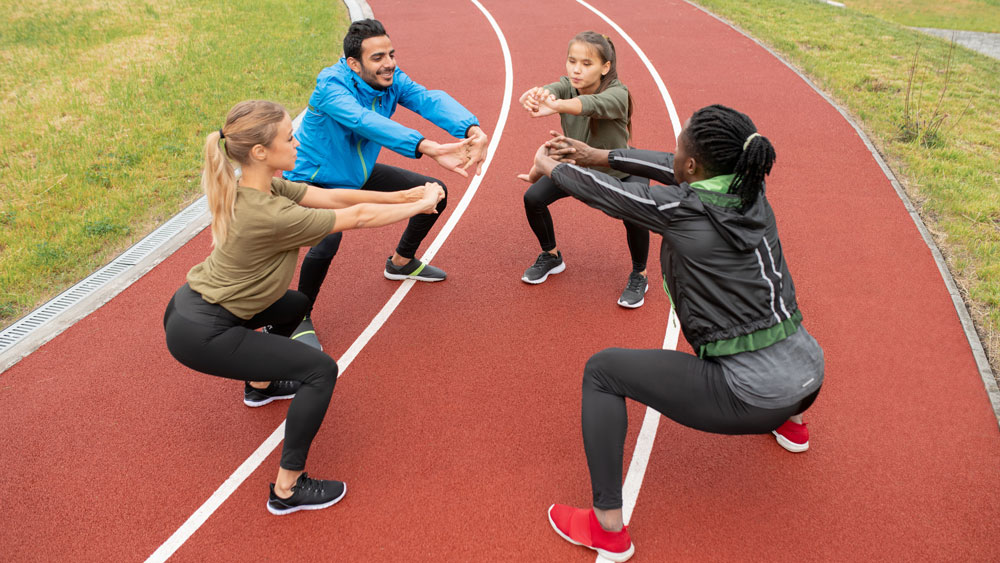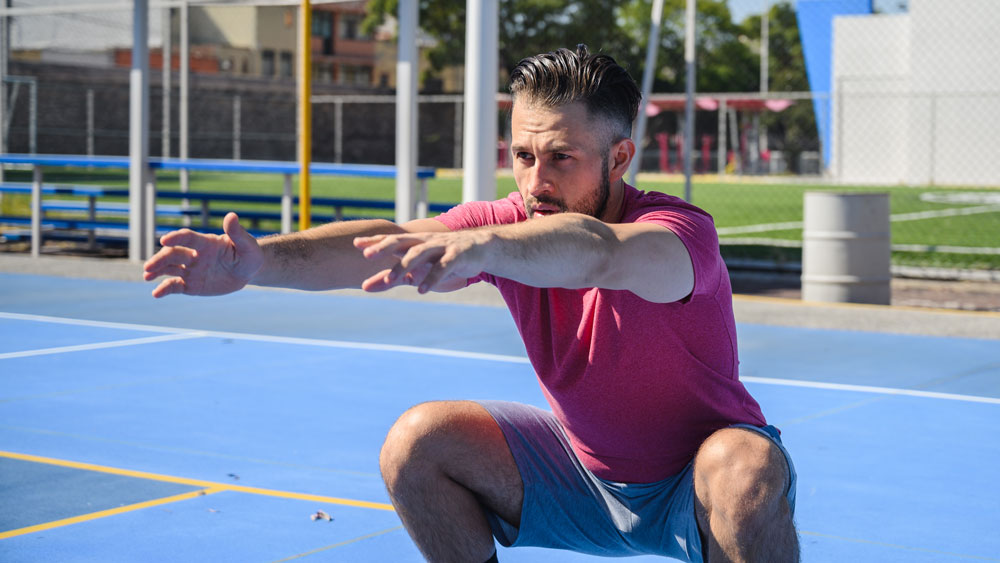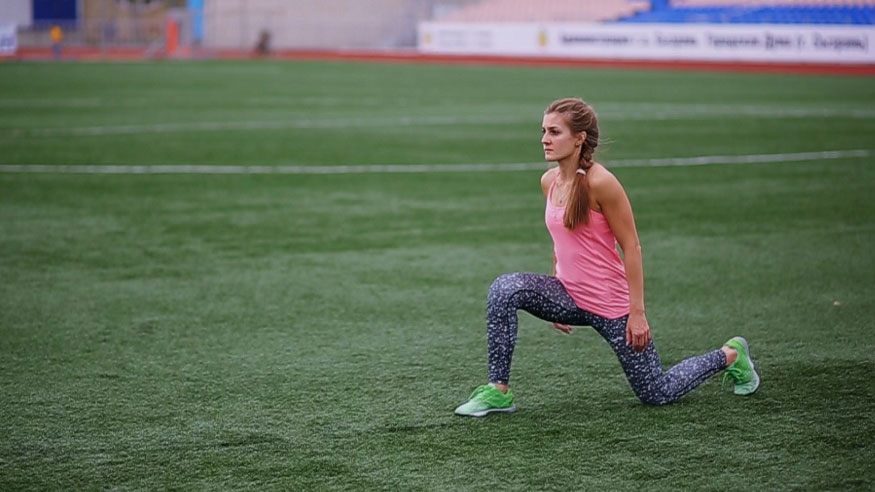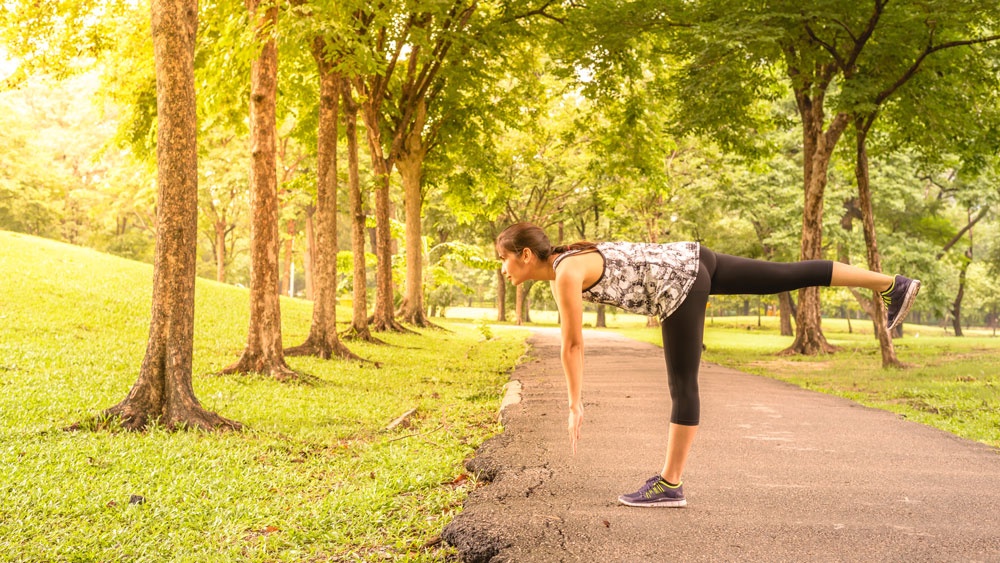The Best Leg Exercises For Runners
Increase your strength and speed on the run with these essential leg exercises

If you’re a runner, the chances are that you know you should be doing some kind of strength work to support your running. This will not only increase your leg strength and improve your performance, it will also build resilience in your body so you’re less likely to succumb to injury, especially when you’re following a marathon training plan and logging a lot of miles.
You don’t have to knock out savage leg sessions daily to benefit, either. Merely cycling through the below exercises once or twice a week can make a big difference.
These leg exercises for runners have been selected by Chris Betteridge, running coach for WeRun. The WeRun Virtual Running Club has 140 coaches that provide members with training sessions, strength and conditioning workouts (including a four-week challenge to whip you into shape), and yoga and Pilates classes. It costs £8 a month or £70 a year to be a member and you can try a free sample week to get a better idea of the benefits, either via the website or the app (App Store and Google Play).
For more detail about how to approach this supportive work, check out our strength training for runners guide.
Unweighted squat

“The squat is perfect for balancing the strength of your hips, knees and ankles,” says Betteridge. “The basic squat is also a safe and effective move.
“Stand with your feet parallel and hip-width apart. Keep your heels grounded throughout and your chest directly above your pelvis at all times. Drop your hips as low as you can, then stand back up. Don’t worry about bending your back – if you’re not holding a weight the risk of injury is significantly lower. Just keep your chest high and hips low.”
Reverse lunge

“The forward lunge shifts the focus onto the quads rather than the glutes, while the reverse lunge replicates and strengthens the running movement of each leg in turn,” says Betteridge. “It’s perfect for increasing the power in your stride.
Get the Coach Newsletter
Sign up for workout ideas, training advice, reviews of the latest gear and more.
“Step back and drop to one knee, then return to standing. Keep the front heel grounded throughout, and make sure your front knee stays over your toes and there’s no side-to-side movement.”
Single-leg deadlift

“This is the best movement for improving strength in the posterior chain,” says Betteridge. “It’s also great for improving your foot and ankle strength, both of which are essential for good balance.
“Stand on one leg. Bend at the knee and hinge from the hips to reach towards the floor with both hands. Try not to bend your back, and keep your shoulders, back and chest open. You do not have to touch the floor – it’s better to keep your back straight.”
See related
- The Fundamentals Of Strength Training For Runners
- 15-Minute Core Workouts For Runners
- The Benefits Of Pilates For Runners, Gym-Goers, Office Workers And Men
- Support Your Marathon Training With This Home Workout For Runners
Side lunge against wall
“This is a great exercise for working the outer hips and inner thighs, which makes it perfect for improving stability against lateral forces through the running stride,” says Betteridge. “It’s essential for keeping the pelvis level and stable.
“Stand with the outside edge of your left foot against a wall. Step your right foot out wide. Now try to touch your left hip to the wall at the same time as your left knee. If that’s easy, step wider. Try to find the point where it is difficult, but not impossible to reach.”
Calf jump
“This is skipping without the rope,” says Betteridge. “It’s a great plyometric workout for the calf, achilles and plantar fascia, and amazing for foot and ankle strength. It helps you access free energy on the run – when the muscle can contract with elasticity, some of the energy is preserved and created by a natural springiness.
“Jump, keeping the knees fixed in a straight but not locked position. Try this exercise at 180bpm – use a metronome to keep to the right speed – for up to two minutes per mile that you wish to be able to run. Make sure that the heel makes a solid contact with the ground with each jump for maximal calf lengthening.”
And just so you don’t think we made a mistake, Betteridge is indeed recommending 52 minutes of calf jumps for marathon runners.
“Anyone with the physical conditioning required to run a marathon should expect to be able to do that length of time in calf jumps,” says Betterridge. “The biggest practical problem when approaching this length of time is boredom, and that’s when skipping becomes more attractive because you can incorporate other skipping skills to keep you interested.
“For beginner runners, calf jumps are more accessible and relevant to the discipline of running than skipping. There are some who will struggle with the time allocation of calf jumps, and it's these runners that tend to be heavier-footed and carry heavier impact through their stride. However, if your primary focus is on injury prevention and longevity in running, calf jumps are vital.”

Nick Harris-Fry is a journalist who has been covering health and fitness since 2015. Nick is an avid runner, covering 70-110km a week, which gives him ample opportunity to test a wide range of running shoes and running gear. He is also the chief tester for fitness trackers and running watches, treadmills and exercise bikes, and workout headphones.
